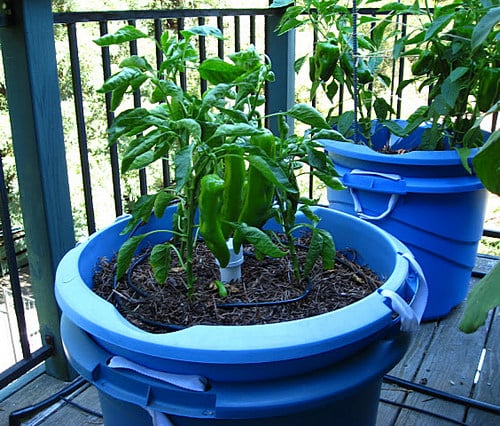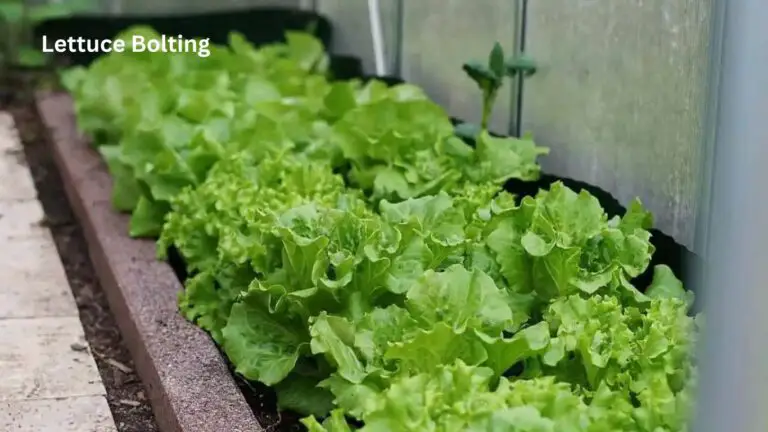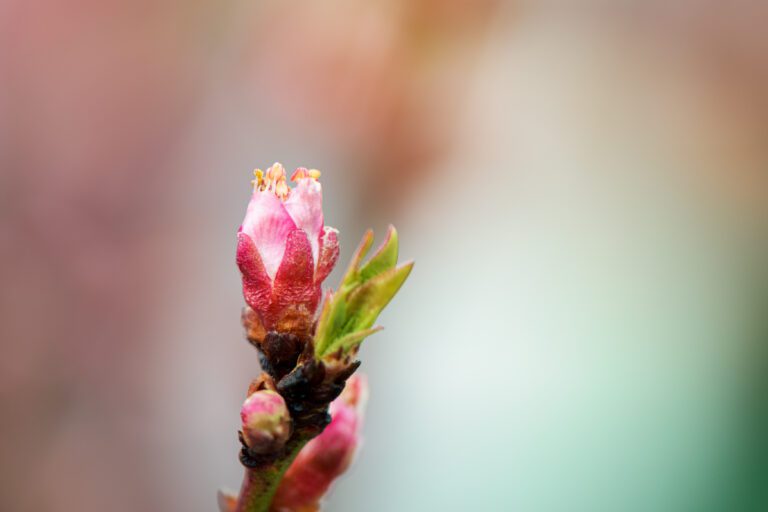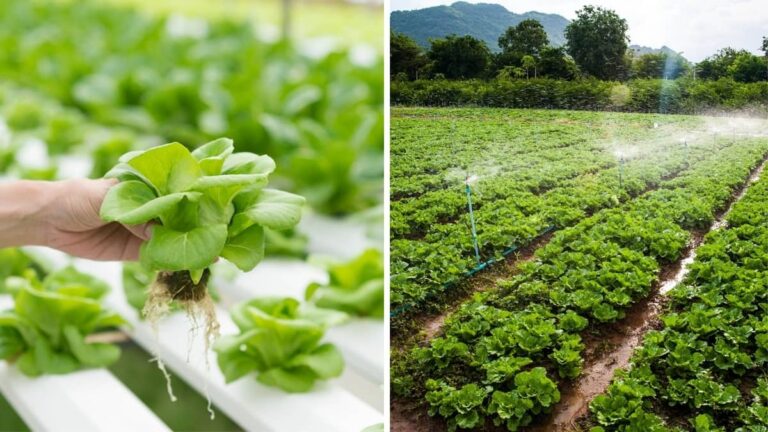Why Tomatoes Split on the Vine and How to Prevent It
Table of Contents
Understanding the Culprit: Factors That Cause Tomato Splitting
Tomato splitting can be a frustrating problem for gardeners, but understanding the factors that contribute to this issue is key to finding effective solutions. Several factors can cause tomato splitting, including watering practices, temperature fluctuations, overripeness, genetics, and more. By examining these factors closely, we can gain a deeper understanding of the culprit behind tomato splitting and implement strategies to minimize its occurrence.
One significant factor that contributes to tomato splitting is improper watering practices. Fluctuations in soil moisture levels can cause the tomato fruit to absorb water rapidly, leading to the expansion and eventual splitting of the skin. Overwatering, especially after a period of drought or neglect, can be particularly problematic. On the other hand, inadequate watering can result in water stress, causing the fruit to shrink and the skin to crack. Balancing the moisture levels in the soil through consistent and measured watering is essential in preventing tomato splitting.

The Role of Watering in Tomato Splitting
Watering plays a crucial role in preventing tomato splitting. The amount and timing of watering directly impact the development and strength of tomato fruits, influencing their susceptibility to splitting. When tomato plants experience dry periods followed by heavy watering, the sudden influx of water can cause the fruits to expand rapidly, leading to cracks in the skin.
To avoid this issue, it is essential to maintain consistent and adequate soil moisture levels throughout the growing season. Regularly monitor the moisture content of the soil using a moisture meter or by checking the soil texture. Aim to keep the soil consistently moist but not waterlogged, as excessive moisture can also contribute to tomato splitting. Water deeply, ensuring that the root zone is thoroughly saturated, rather than relying on frequent shallow watering which promotes shallow root growth.
Additionally, consider using mulch around your tomato plants, such as straw or wood chips, to help retain soil moisture and reduce evaporation. By paying careful attention to watering practices, you can significantly reduce the risk of tomato splitting and promote healthy fruit development.
The Impact of Temperature Fluctuations on Tomato Splitting
Temperature fluctuations play a significant role in the occurrence of tomato splitting, a phenomenon that can cause frustration for gardeners. Tomatoes are particularly sensitive to sudden shifts in temperature, and this can lead to the splitting of the fruit. When the temperature rises rapidly after a period of cool weather, or when there are significant temperature swings within a short period of time, the delicate skins of tomatoes can’t adjust quickly enough, resulting in splitting.
High temperatures, especially during the day, can cause the fruit to expand rapidly, while cooler temperatures at night cause the skins to contract. This expansion and contraction contribute to the internal pressure within the tomato, and when it becomes too much for the skin to handle, it splits. It’s important to note that tomatoes are more vulnerable to splitting when they are fully mature and close to ripening. Therefore, gardeners need to be mindful of temperature fluctuations during this critical stage to minimize the occurrence of splitting in their tomato plants.

Overripeness: How It Contributes to Tomato Splitting
Overripeness is a common issue that often leads to tomato splitting, causing frustration for gardeners and farmers alike. The ripening process of tomatoes involves biochemical changes that gradually soften the fruit, making it more susceptible to splitting. When a tomato becomes overripe, the pressure inside the fruit increases as it continues to ripen, ultimately exceeding the skin’s capacity to contain it. As a result, the skin splits open, leading to unsightly and often unusable tomatoes.
One contributing factor to overripeness and subsequent splitting is the improper timing of harvesting. Determining the ideal time to harvest tomatoes can be challenging, as it varies depending on the variety and growing conditions. Leaving tomatoes on the vine for too long, beyond their optimal ripeness, can significantly increase their risk of splitting. Gardeners must keep a close eye on their tomato plants, regularly inspecting the fruits for signs of ripeness and carefully timing their harvest to ensure they are not left to become overripe.
The Genetics Behind Tomato Splitting
When it comes to tomato splitting, genetics plays a crucial role. The genetic makeup of a tomato plant determines various factors that can contribute to or mitigate the risk of splitting. Different tomato varieties have distinct genetic traits that can influence their susceptibility to splitting. Some varieties are genetically predisposed to split more easily, while others have been bred to be more resistant.
Genes related to cell wall structure and development, as well as hormone regulation, can have a significant impact on tomato splitting. For instance, a higher concentration of certain hormones, such as ethylene, can weaken the cell walls, making them more prone to splitting. On the other hand, the presence of genes that enhance cell wall strength can help reduce the occurrence of splitting.
Understanding the genetic factors involved in tomato splitting is essential for gardeners and tomato breeders alike. By choosing tomato varieties with genetic traits that minimize splitting, gardeners can significantly reduce the risk of experiencing this frustrating problem. Additionally, breeders can use this knowledge to develop new tomato varieties that are less prone to splitting, providing gardeners with more reliable and productive plants.

The Importance of Choosing the Right Tomato Variety
Choosing the right tomato variety plays a crucial role in determining the success of your gardening endeavors. With numerous options available, it is essential to select a variety that aligns with your specific goals and growing conditions. Each tomato variety possesses unique characteristics that can greatly influence their resistance to splitting, disease tolerance, flavor profile, and overall performance. By carefully considering these factors, you can ensure a bountiful harvest and minimize the occurrence of tomato splitting.
One key aspect to consider when choosing a tomato variety is its level of resistance to splitting. Some varieties exhibit a greater resistance to splitting than others, making them more suitable for regions or climates prone to fluctuating moisture levels. For example, certain heirloom varieties may have thinner skin and are consequently more susceptible to splitting under unfavorable conditions. On the other hand, modern hybrid varieties often offer enhanced resistance to splitting due to their genetic traits. By selecting a variety that is specifically bred for splitting resistance, you can reduce the risk of disappointment and boost the success of your tomato crop.
Cultivation Techniques to Minimize Tomato Splitting
Tomato splitting, a common problem faced by gardeners, can be minimized through effective cultivation techniques. By implementing these strategies, gardeners can ensure healthier and more resilient tomato plants, reducing the occurrence of this frustrating issue.
One key technique is to practice consistent and regular watering. Tomato plants require a steady supply of moisture to thrive, but overwatering can lead to splitting. By maintaining a consistent watering schedule, ensuring the soil is evenly moist, and avoiding sudden fluctuations in moisture levels, gardeners can prevent this problem.
Another important cultivation technique is proper pruning and training methods. Pruning helps to control the growth of tomato plants, ensuring a better distribution of nutrients and reducing stress on the plant. This, in turn, can minimize the risk of tomato splitting. By removing excess foliage and supporting the stems with stakes or cages, gardeners can improve air circulation and provide essential support to the growing fruit.
Implementing these cultivation techniques can go a long way in minimizing tomato splitting. By prioritizing proper watering and employing effective pruning and training methods, gardeners can enjoy healthier, robust tomato plants and a bountiful harvest. With these strategies in mind, let’s explore further tips and tricks to prevent this frustrating issue.
Below is a table outlining cultivation techniques to minimize tomato splitting:
| Technique | Description |
|---|---|
| Consistent Watering | Ensure consistent moisture levels by watering tomatoes regularly, especially during dry periods. Avoid sudden fluctuations in soil moisture, which can lead to fruit splitting. |
| Mulching | Apply mulch around tomato plants to help maintain soil moisture and regulate temperature. This reduces the risk of rapid water uptake by the fruits, preventing splitting. |
| Proper Fertilization | Provide balanced fertilization to promote steady growth and development of tomato fruits. Avoid excessive nitrogen, which can lead to rapid fruit expansion and splitting. |
| Pruning | Remove excess foliage and suckers to improve air circulation and sunlight penetration around tomato fruits. This helps regulate fruit growth and reduces the risk of splitting. |
| Harvesting at the Right Time | Harvest tomatoes when they are fully ripe but still firm. Leaving overripe fruits on the vine increases the likelihood of splitting due to increased water uptake and pressure. |
| Selecting Resistant Varieties | Choose tomato varieties known for their resistance to splitting, such as ‘Roma’ or ‘San Marzano’. These varieties tend to have thicker skins and are less prone to fruit splitting. |
Implementing these cultivation techniques can help minimize tomato splitting and ensure a bountiful harvest of healthy, intact fruits.
The Significance of Proper Pruning and Training Methods
Proper pruning and training methods play a significant role in the successful cultivation of healthy tomato plants. By implementing these techniques, gardeners can optimize plant growth, enhance productivity, and minimize the risk of tomato splitting. Pruning involves selectively removing specific branches or leaves, while training refers to guiding the plant’s growth and development.
One key benefit of pruning is improved air circulation around the tomato plant, reducing the chances of fungal diseases such as blight. When foliage is too dense, it creates a humid environment that favors the growth of pathogens. By removing excess leaves and branches, gardeners can create more space between plants, allowing air to flow freely. This helps to minimize the risk of infections and ensures healthier plants overall. Additionally, proper pruning can also redirect the plant’s energy towards essential areas, such as fruit production, resulting in larger and more uniform tomatoes.
Nutritional Factors that Affect Tomato Splitting
Tomato splitting is a common problem faced by many gardeners and often leads to frustration and disappointment. While factors such as watering, temperature fluctuations, and overripeness are well known to contribute to this issue, it is important to also consider the role of nutritional factors in tomato splitting.
Proper nutrition is vital for the healthy development of tomato plants and can play a significant role in preventing splitting. Calcium, in particular, is essential for cell wall development and strength. A deficiency in calcium can weaken the cell walls, making tomatoes more susceptible to splitting. To ensure adequate calcium levels, it is recommended to amend the soil with lime or gypsum before planting. Additionally, using calcium-rich fertilizers or supplements during the growing season can provide an extra boost of this essential nutrient.
Another nutrient that can affect tomato splitting is nitrogen. While nitrogen is important for overall plant growth, an excessive amount can result in rapid cell expansion, making tomatoes more prone to splitting. It is crucial to maintain a balanced nitrogen level by following recommended fertilizer guidelines and avoiding over-fertilization. Regular soil testing can help determine the precise nutrient needs of the plants and guide fertilization practices accordingly.
Considering these nutritional factors and implementing appropriate strategies to address them can help minimize the occurrence of tomato splitting. However, it is worth noting that nutritional factors alone may not be the sole cause of the problem. It is essential to take a comprehensive approach by considering other factors such as watering, temperature, and genetic factors to effectively prevent and manage tomato splitting.
The Role of Soil Moisture in Preventing Tomato Splitting
Soil moisture plays a crucial role in preventing tomato splitting, a common issue that many gardeners face. When tomatoes receive an inconsistent water supply, they are more prone to splitting, which can negatively impact their quality and shelf life. Maintaining the right level of soil moisture is therefore essential for healthy tomato plants and optimal fruit production.
When the soil becomes too dry, tomatoes may experience rapid water uptake when they receive a sudden influx of moisture. This sudden expansion can cause the fruit to split as the skin struggles to accommodate the influx of water. On the other hand, excessive moisture can also be detrimental, as it can lead to overly soft tomatoes that are susceptible to splitting. Achieving a balance is crucial in preventing tomato splitting and ensuring the overall health of the plant.
To maintain proper soil moisture levels, gardeners should consider implementing irrigation systems or watering techniques that promote consistent moisture. Drip irrigation, for example, provides a slow and steady supply of water directly to the plant’s root zone, minimizing the risk of excessive water uptake and subsequent splitting. Additionally, mulching can help regulate soil moisture by reducing evaporation and maintaining a more consistent level of moisture in the root zone.
Regularly monitoring soil moisture levels is also crucial. Gardeners can assess soil moisture by using a moisture meter, which provides accurate readings of the soil’s moisture content. This information allows gardeners to adjust their watering schedule or irrigation system accordingly, ensuring that the plants receive the optimal amount of water to prevent splitting.
By understanding the role of soil moisture in preventing tomato splitting and implementing appropriate watering techniques, gardeners can safeguard their tomato plants and enjoy a bountiful harvest of healthy, intact fruits.
Strategies for Consistent Watering to Avoid Tomato Splitting
Consistency in watering is key when it comes to preventing tomato splitting. Irregular watering patterns can lead to fluctuations in soil moisture, causing the fruits to expand and contract rapidly. This puts undue pressure on the skin, making it more prone to splitting. To avoid this issue, establish a watering schedule and stick to it. Aim to water your tomato plants deeply and evenly, ensuring that the moisture reaches the root zone. Keep in mind that tomatoes have high water requirements, particularly during hot and dry periods. Adjust your watering frequency accordingly to maintain optimal soil moisture levels.
In addition to consistent watering, it is crucial to provide adequate drainage for your tomato plants. Excess water accumulation in the soil can also contribute to splitting. Ensure that your planting beds or containers have proper drainage systems in place. This will help prevent waterlogged conditions that may negatively affect the health of your tomatoes.
Regularly monitor the moisture levels in your soil to ensure they are within the optimal range. Investing in a moisture meter can be a helpful tool in determining when and how much water your tomatoes need. Remember, by maintaining an appropriate watering routine and facilitating proper soil drainage, you can significantly reduce the occurrence of tomato splitting and promote healthy fruit development.
Here’s a table outlining strategies for consistent watering to avoid tomato splitting:
| Watering Strategy | Description |
|---|---|
| Drip Irrigation | Use drip irrigation systems to deliver water directly to the base of tomato plants. This ensures consistent moisture without wetting the foliage, reducing the risk of disease and splitting. |
| Soaker Hoses | Lay soaker hoses along the base of tomato rows to provide slow, consistent watering. This helps maintain soil moisture levels and minimizes fluctuations that can lead to fruit splitting. |
| Watering in the Morning | Water tomato plants in the morning to allow excess moisture to evaporate during the day. This reduces the risk of fungal diseases and helps regulate water uptake by the fruits. |
| Avoid Overhead Watering | Minimize overhead watering, as it can lead to uneven moisture distribution and increase the likelihood of fruit splitting. Focus on watering the soil around the base of the plants. |
| Mulching | Apply organic mulch, such as straw or wood chips, around tomato plants to help retain soil moisture. This reduces the frequency of watering and helps prevent fluctuations that can cause splitting. |
| Monitoring Soil Moisture | Regularly monitor soil moisture levels using a moisture meter or by checking the soil with your finger. Adjust watering frequency and duration based on weather conditions and plant needs. |
Implementing these strategies for consistent watering can help maintain optimal soil moisture levels and reduce the risk of tomato splitting, ensuring a successful harvest of healthy fruits.
Understanding the Impact of Tomato Size on Splitting
When it comes to tomato splitting, the size of the fruit can play a significant role in its susceptibility. Larger tomatoes are generally more prone to splitting compared to smaller ones. This is primarily due to the increased pressure inside the fruit as it grows, causing the skin to stretch and potentially rupture. Additionally, larger tomatoes tend to have thicker skin, which can make them more difficult to expand as they ripen.
Studies have shown that certain tomato varieties are more prone to splitting, regardless of their size. This emphasizes the importance of selecting the right variety for your growing conditions and desired outcome. Factors such as fruit size, skin thickness, and genetics all intersect to determine the likelihood of splitting. By understanding the impact of tomato size on splitting, you can make informed choices about the varieties you cultivate and adopt appropriate cultivation techniques to minimize the risk.
Harvesting Techniques to Reduce Tomato Splitting
Harvesting techniques play a crucial role in reducing tomato splitting, ensuring that the fruits maintain their quality and appearance. It is essential to have a good understanding of the optimal harvesting time for your specific tomato variety. Harvesting too early or too late can increase the chances of tomato splitting.
When harvesting tomatoes, it is important to gently twist or cut the fruit from the plant, being careful not to apply excessive force. This prevents any undue stress on the tomato’s skin and reduces the risk of splitting. Additionally, always handle the tomatoes with care to avoid bruising or damaging the skin, as even minor injuries can contribute to splitting.
To further minimize the chances of tomato splitting during harvesting, it is recommended to prioritize picking the tomatoes that are ready to be harvested first. Leaving overly mature or overripe tomatoes on the vine for an extended period can make them more susceptible to splitting. Regularly inspect your plants and harvest the ripe fruits promptly, promoting healthier and less vulnerable tomatoes.
Incorporating these simple yet effective harvesting techniques into your routine can significantly reduce tomato splitting and help you enjoy a bountiful harvest of intact and delicious tomatoes. Remember, being attentive to the optimal harvesting time and handling the fruits with care can make all the difference in preserving their quality and appearance.

The Role of Mulching in Preventing Tomato Splitting
Mulching is a valuable technique in preventing tomato splitting, as it provides a protective layer around the plants and helps regulate soil moisture levels. By applying a layer of organic mulch, such as straw or wood chips, around the base of tomato plants, gardeners can create a barrier that reduces water evaporation and shields the roots from extreme temperature fluctuations.
One of the main causes of tomato splitting is inconsistent watering, which can lead to fluctuations in soil moisture levels. The use of mulch helps to maintain a more consistent moisture level in the soil, preventing sudden changes that can stress the plants and lead to splitting. Additionally, the mulch acts as an insulator, keeping the soil cool during hot weather and reducing the risk of rapid fruit expansion that can result in splitting.
In addition to its moisture-regulating benefits, mulch also helps to suppress weed growth, which can compete with tomato plants for nutrients and water. By keeping the area around the plants clear of weeds, mulch ensures that the tomatoes receive the optimal resources they need to grow and develop properly. Furthermore, mulch can act as a natural barrier against pests, reducing the risk of damage to the fruit and foliage. Overall, incorporating mulching techniques into tomato cultivation can significantly minimize the occurrence of splitting and promote healthier plant growth.

The Importance of Regularly Inspecting Your Tomato Plants
Regularly inspecting your tomato plants is a crucial aspect of successful gardening. By regularly evaluating the health and condition of your plants, you can detect any issues or potential problems early on and take appropriate action. This proactive approach allows you to address any concerns promptly, ensuring optimal growth and productivity of your tomato plants.
During your inspections, pay close attention to the foliage, stems, and fruits of your tomato plants. Look for any signs of disease, such as yellowing leaves, spots, or wilting. Insects or pests, like aphids or hornworms, may also be present and can cause significant damage if left unchecked. By identifying these issues early, you can implement appropriate pest control measures or treat diseases promptly, preventing them from spreading throughout your garden.
Inspecting your tomato plants also provides an opportunity to assess their overall growth and development. Keep an eye out for any signs of nutrient deficiencies or imbalances, such as stunted growth, discoloration, or poor fruit development. Adjusting your fertilizer or nutrient application accordingly can help address these issues and promote healthy plant growth.
Regular inspections give you the chance to remove any dead or damaged branches or leaves that may be inhibiting the growth of your tomato plants. Pruning off these unwanted parts will redirect the plant’s energy towards producing healthy foliage and robust fruit. Additionally, inspecting your tomato plants allows you to monitor and control their size, ensuring they don’t become overgrown or crowded.
By making regular inspections a part of your gardening routine, you can stay ahead of any potential problems, maintain the health of your tomato plants, and ultimately increase your chances of a bountiful harvest. So take the time to closely examine your plants, and remember that prevention is always better than cure in the world of gardening.

Professional Tips and Tricks to Prevent Tomato Splitting
To prevent tomato splitting, there are several professional tips and tricks that you can implement in your garden. First and foremost, it is crucial to maintain consistent water availability for your tomato plants. Uneven watering can cause fluctuations in the plant’s moisture content, leading to split fruit. Make sure to water your tomato plants deeply and evenly, ensuring that the soil is consistently moist.
In addition to watering, proper pruning and training methods are essential for preventing tomato splitting. By removing excessive foliage and supporting the plants with stakes or cages, you can reduce stress on the branches and prevent fruit from weighing them down. This practice not only promotes better air circulation but also helps the plants distribute nutrients more efficiently.
Furthermore, it is important to choose the right tomato variety. Some varieties are more prone to splitting than others, so selecting a variety known for its resistance to splitting can greatly reduce the occurrence of this problem. Consider factors such as skin thickness and overall fruit size when making your selection.
Overall, applying these professional tips and tricks can significantly reduce the chances of tomato splitting in your garden. By providing consistent water, implementing proper pruning techniques, and selecting the right tomato variety, you can ensure a bountiful harvest of intact and delicious tomatoes.
What causes tomato splitting?
Tomato splitting is primarily caused by a combination of factors such as uneven watering, temperature fluctuations, overripeness, genetic factors, and improper cultivation techniques.
How does watering impact tomato splitting?
Uneven watering, particularly irregular or excessive watering, can lead to tomato splitting. It is important to maintain a consistent watering schedule to prevent this issue.
Can temperature fluctuations contribute to tomato splitting?
Yes, sudden changes in temperature, particularly when accompanied by excessive heat or coolness, can cause tomatoes to split. Providing consistent and appropriate temperature conditions can help minimize splitting.
Does overripeness play a role in tomato splitting?
Yes, overripe tomatoes are more prone to splitting. It is important to harvest tomatoes at the appropriate level of ripeness to prevent splitting.
How do genetics affect tomato splitting?
Some tomato varieties have a higher predisposition to splitting due to their genetic makeup. Choosing the right tomato variety can help minimize the occurrence of splitting.
Are there specific cultivation techniques to minimize tomato splitting?
Yes, proper cultivation techniques such as providing adequate support, training, and pruning can help minimize tomato splitting. Ensuring proper spacing between plants and proper nutrient management also play a role.
How does soil moisture impact tomato splitting?
Inconsistent soil moisture levels, particularly fluctuations between dry and wet conditions, can contribute to tomato splitting. Maintaining proper soil moisture levels through appropriate watering and mulching is important.
What are some strategies for consistent watering to avoid tomato splitting?
Using a drip irrigation system, watering deeply but infrequently, and avoiding overhead watering can help maintain consistent soil moisture levels and prevent tomato splitting.
Does tomato size affect splitting?
Yes, larger tomatoes are generally more prone to splitting due to their increased internal pressure. Harvesting tomatoes when they reach their ideal size can help minimize splitting.
Are there specific harvesting techniques to reduce tomato splitting?
Harvesting tomatoes with scissors or pruning shears, rather than twisting or pulling them off the vine, can help minimize the risk of splitting.
How does mulching help prevent tomato splitting?
Mulching helps regulate soil moisture levels, prevent temperature fluctuations, and reduce water evaporation, all of which contribute to preventing tomato splitting.
Why is it important to regularly inspect tomato plants?
Regularly inspecting tomato plants allows you to identify any signs of splitting or other issues early on. This enables timely intervention and helps prevent further damage.
Can you provide some professional tips and tricks to prevent tomato splitting?
Some professional tips to prevent tomato splitting include maintaining consistent watering, providing adequate support and training for plants, choosing appropriate tomato varieties, monitoring soil moisture levels, and regularly inspecting plants for any signs of splitting or other issues.

Beck Wakeford is a dedicated writer at SouthElMonteHydroponics, with a fervent enthusiasm for agriculture and technological innovation. Armed with a degree in Agricultural Engineering from a leading university, Beck specializes in hydroponic systems design, automation, and optimization. Their passion for merging traditional farming with cutting-edge technology drives them to explore novel solutions for sustainable food production. Beck’s expertise and keen interest in the intersection of engineering and agriculture make them a valuable asset in the quest for efficient and eco-friendly farming practices. Through their writing, Beck aims to inspire others to embrace the potential of hydroponics in shaping a more sustainable future.







